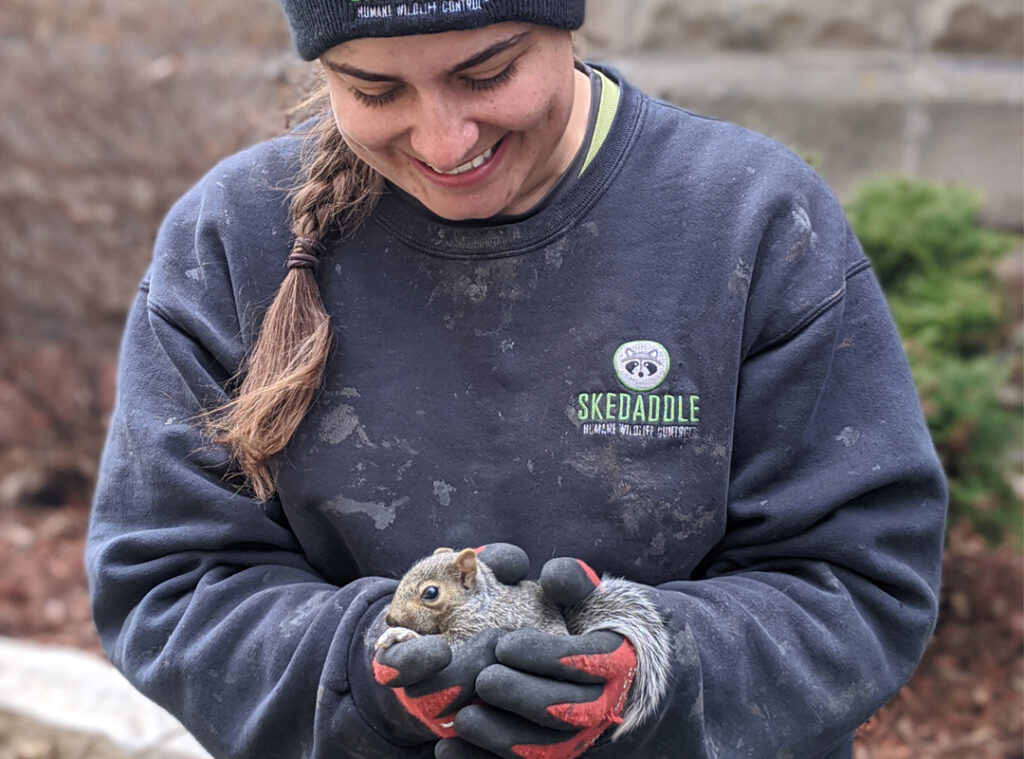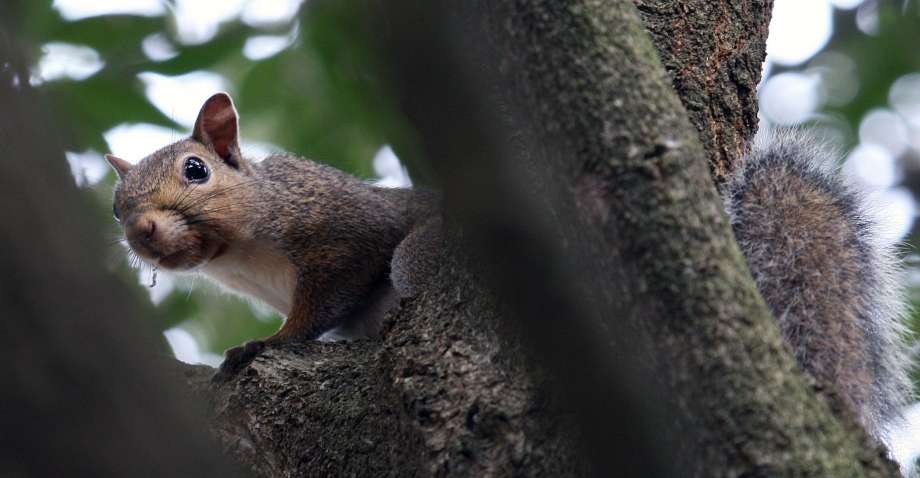Squirrels are well known as amazing tree climbers but what’s even more amazing are the aspects of their biology that make them so darn good at it. Chances are that if you see a squirrel, a tree is nearby.
But why do squirrels climb trees in the first place? In this article, we will be exploring why squirrels climb trees and how they do it so well. At Skedaddle, this knowledge supplements our expertise in how to repel squirrels.
Why Squirrels Climb Trees
This is a very fascinating and complex question that could be answered differently depending on who you ask. You may be interested in the adaptive survival method of tree-climbing in general, which leads to the question of why certain animal species adapted this behaviour in the first place. But for our purposes here, we can say that squirrels climb trees to obtain food, evade predators, and build their nests.
- Nest-Building: Many species of squirrels build their nests in trees, though some species of ground squirrels do not.
- Obtaining Food: The trees that shelter and protect squirrels also serve as a food source. American red squirrels eat bark, flowers, sap, bulbs, and tree buds. Ground squirrels will also climb trees as they seek out food.
- Avoiding Predators: A tree is a squirrel’s safe haven, which is why a squirrel that is surprised on the ground will often scramble up the nearest tree. Squirrels are superior at tree-climbing to even the nimblest of ground predators. They will also flick their tails and make special sounds to warn nearby squirrels if a predator is spotted.
How Squirrels Climb Trees
Squirrels are built for climbing and jumping, and this is achieved through some specific features of their biology. They have powerful lower leg muscles that enable them to jump up to twenty feet. The powerful jump allows them to easily leap from branch to branch, or directly from the ground to a tree trunk when predators are nearby.
Squirrel’s lightweight bodies further enhance their jumping and climbing abilities, and they’ve evolved a very fast metabolism in order to maintain their slender frames.
One of the most interesting features of a squirrel is its tail. The tail can serve as a brake when climbing down trees, it can help maintain balance, hang upside down from tree branches, and even act as a parachute in case of a fall.
Squirrel claws and feet are another incredible feature. Their ankles can rotate 180 degrees, allowing them to climb a tree backwards and forwards. Climbing a tree backwards is one way to protect their tail from predators on the ground, by keeping it higher up and out of reach.
The hook-life, inwardly curved claws on a squirrel’s hands can hold on to any rough surfaces, including brick and wooden walls. Climbing backwards is achieved with the combination of the tail for balance, the hooked claws, and the 180-degree-rotating ankles.
Squirrel Removal Victoria Citizens Can Depend On

As amazing as they are, squirrels can also be a common problem in Victoria. As you can see from asking “Why do squirrels climb trees?”, many of the same benefits of a tree are offered by a cozy attic or porch rafters of your home. At Skedaddle Humane Wildlife Control, we know and respect the animals in the Victoria area. When you call us, we will send wildlife experts to humanely remove them from your home and deter them from returning.




